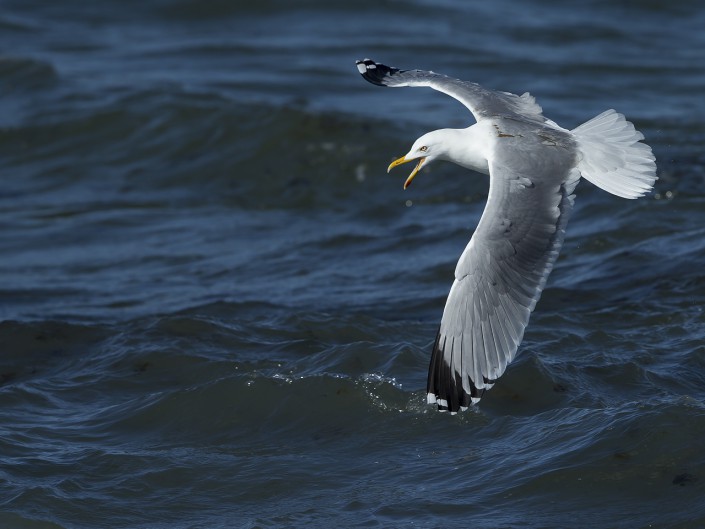This post is also available in: Swedish
Herring gull – Laruts argentus
Herring gull – Laruts argentus
The European herring gull (Larus argentatus) is a large gull (up to 26 in (66 cm) long). One of the best known of all gulls along the shores of western Europe, it was once abundant. It breeds across Northern Europe, Western Europe, Central Europe, Eastern Europe, Scandinavia and the Baltic states. Some European herring gulls, especially those resident in colder areas, migrate further south in winter, but many are permanent residents, e.g. in the British Isles, Iceland, or on the aNorth Sea shores. European herring gulls have a varied diet, including fish, crustaceans and dead animals as well as some plants.
While herring gull numbers appear to have been harmed in recent years, possibly by fish population declines and competition, they have proved able to survive in human-adapted areas and can often be seen in towns acting as scavengers.
European herring gull flocks have a loose pecking order, based on size, aggressiveness and physical strength. Adult males are usually dominant over females and juveniles in feeding and boundary disputes, whilst adult females are typically dominant when selecting nest sites. Communication between these birds is complex and highly developed —employing both calls and body language. The warning sounds to chicks are the most obvious to interpret.
The warning to their chicks sounds almost like a small dog that barks. If the danger gets closer the adult birds repeat this sound, and if a danger is considered very dangerous the “bark/sound” comes in sequences of three quick such sounds. If a chick is “grounded” the adult bird lifts and attempts to annoy the threat. If other adult birds are present in such situations, they actually begin to help in the same way. For instance, a person with a dog (or who chases the chick) may be attacked by many adult birds, even if just one chick is in danger. The warning sound from a flying bird to a flock of fully fledged birds sounds very different. And it seems that all kinds of gulls understand the “general alert warning sound” of all other gulls. There’s little doubt that the gull’s screaming in fact is a kind of communication. Or in other words “a language”, of course limited to the present tense, but it still obviously includes rather complex matters, like “follow me”.
It sounds like this
Recording by Timo Tschentscher from Xeno canto














































